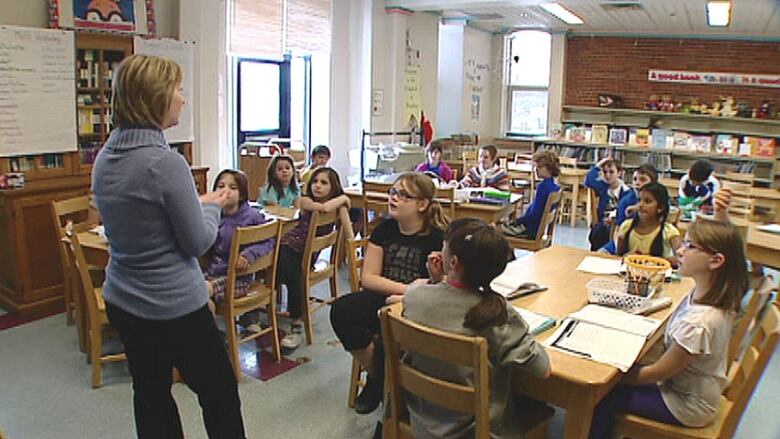Teacher cuts hurting schools, parents worry

Some principals and parents on P.E.I. say cuts to teaching positions are creating issues in Island classrooms this year.
The province cut 34 positions last year and another 40 this year.

"We're hearing from principals, we're hearing from teachers, and this year for the first time, I've been hearing from parents as well," said Gilles Arsenault, president of the P.E.I. Teachers' Federation.
"They're concerned about large class sizes."
Karen Clare of East Wiltshire Intermediate Home and School is one of the parents voicing complaints. The two biggest classes at East Wiltshire now have 36and 35 studentsin them, and two others have at least 30.
"It concerns me for those kids who may be falling behind or who may need that extra help, that the teachers may not be able to spend that extra time with those kids," said Clare.
"They have a large class. They don't have time to see every single student."
It's not just class sizes that are being affected. Teachers do more than just teach in classrooms. For example, at East Wiltshire School the library is now only open part-time.
"It's not open every single day of the week,"said Clare. "So the kids are losing out there that they're not able to do their homework or have that quiet time."
East Wiltshire lost one teaching position this year, and two others in the past two years, and that's led to bigger classes and fewer extra services for students.
Many classes exceed 30 students, federation estimates
CBC News has spoken to several principals who have expressed concern. With fewer teachers, they say they're forced to put what they see as too many students in some classes or limit course offerings.

The English Language School Board wouldn't allow principals to do recorded interviews.
The Teachers' Federation says it's gathered numbers from most intermediate and high school principals, and it estimates 35-40 per cent of their classes have more than 30 students in them. That exceeds the provincial government's class size targets.
School board superintendent Cynthia Fleet acknowledges some classes are bigger than they have been in years past, and that it's not ideal, but she doesn't think it's affecting the overall quality of education.
"We have to remember there are other provinces in Canada who have class sizes exactly like ours," said Fleet.
"They are doing much better than we are, so that does not point to a class size issue."
Education Minister Alan McIsaac isn't available for an interview this week, but he has said teacher cuts are necessary given a big drop in student enrollment. There are roughly 4,000 fewer students on P.E.I. now than there were 10 years ago.
But some principals we spoke to say their school populations have remained steady or even increased over the past decade, yet they have still lost teacher positions.
"I think it's been very inconsistent on how they've been cutting positions in different schools," said Arsenault.
It's the school board that ultimately decides how to distribute cuts. Fleet said the board has to balance cuts at small rural schools, where populations may be declining, with those at larger schools.
"We have rural areas that are declining, but we have to support education in these smaller schools. And that's a cost we bear for the right reason," she said.
In a news release Wednesday the opposition Progressive Conservatives said government is to blame, that the teacher cuts are only about saving money, and that students are paying the ultimate price.












_(720p).jpg)


 OFFICIAL HD MUSIC VIDEO.jpg)
.jpg)



























































































